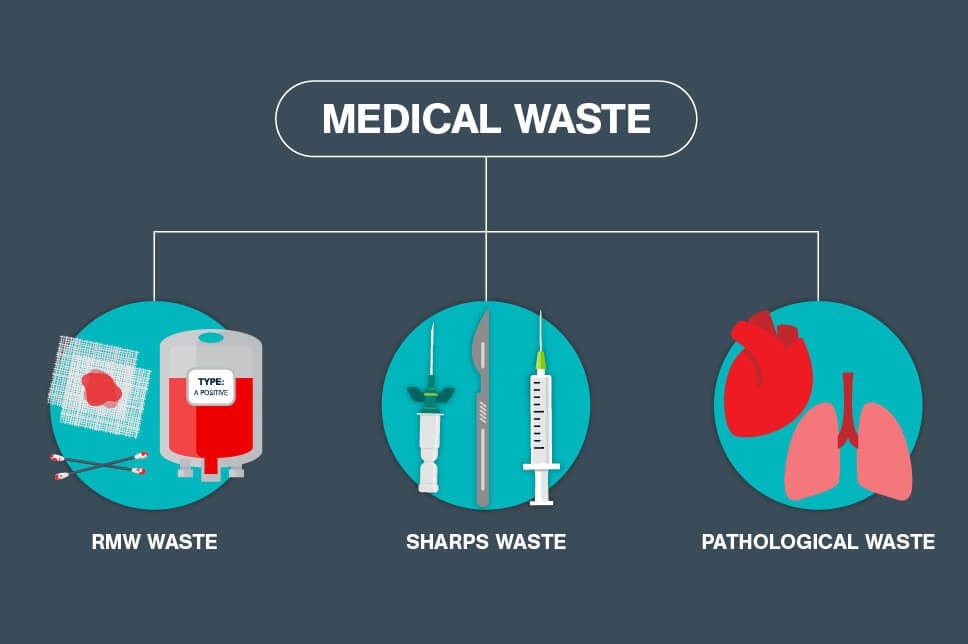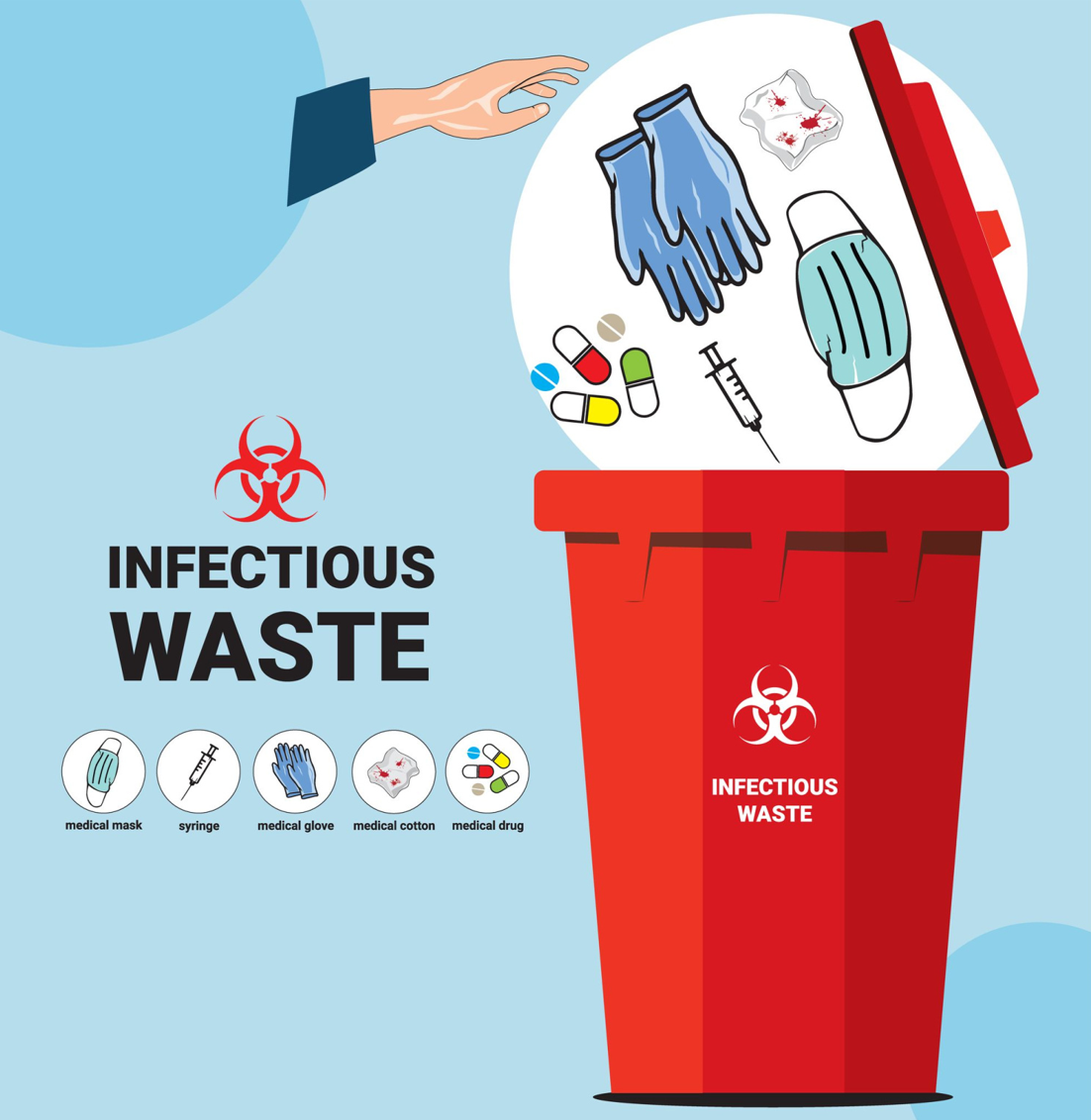Safe and Efficient Medical Waste Removal: Your Trusted Environmental Partner
Effective Techniques of Medical Garbage Disposal
Efficient methods of clinical garbage disposal are crucial in keeping public health and wellness and ecological security. Medical waste, including sharps, pathological waste, and pharmaceutical waste, should be taken care of and disposed of appropriately to stop the spread of infections and secure the setting. This calls for adherence to rigorous policies and the execution of professional waste management practices.
Appropriate segregation of clinical waste, safe and secure storage, effective treatment and sanitation methods, and environmentally-friendly disposal alternatives are essential elements of an efficient clinical garbage disposal system. Expert waste administration services play a vital duty in making sure conformity with guidelines and minimizing the threats connected with incorrect disposal. By using these methods, healthcare facilities can contribute to a more secure and cleaner atmosphere while safeguarding the wellness of the area.
Appropriate Segregation of Medical Waste
Appropriate partition of clinical waste is important for ensuring the effective and safe disposal of these possibly harmful products. Clinical waste refers to any waste created during healthcare tasks, such as medical facilities, facilities, research laboratories, and study centers. It consists of a wide variety of materials, such as utilized needles, syringes, infected dressings, ran out or extra medications, and biological materials.
By setting apart medical waste, medical care facilities can decrease the risk of infections, injuries, and ecological contamination. The process involves classifying waste right into various types, such as sharps, transmittable waste, pharmaceutical waste, and non-hazardous waste. Each kind needs specific handling, packaging, and disposal techniques to avoid exposure to health care employees, waste monitoring workers, and the public.
To ensure correct partition, healthcare centers need to establish clear standards and provide sufficient training to personnel. This consists of educating staff members on the various waste classifications, correct packaging strategies, and making use of appropriate containers - WasteX Medical Waste Disposal. Additionally, clear signs and color-coding systems can be implemented to help with the identification and segregation of different waste types
Safe and Secure Storage Space of Medical Waste
Safe and safe storage of medical waste is important for preserving the integrity and control of possibly dangerous products. Correct storage not just safeguards medical care employees and the public from direct exposure to unsafe materials yet likewise stops ecological contamination.
To make certain secure storage, medical centers should stick to specific guidelines. Waste needs to be kept in puncture-resistant and watertight containers that are labeled properly. These containers need to be firmly secured to stop any kind of leak or spills. Additionally, the storage area should be unattainable and secure to unapproved workers, reducing the danger of accidental exposure.
Proper partition of medical waste is also vital for secure storage space. Various sorts of waste, such as sharps, transmittable materials, and pharmaceutical waste, should be divided to stop cross-contamination. This partition can be achieved via making use of color-coded containers or containers.
Routine tracking and assessment of the storage space area are vital to recognize any possible risks or violations. This includes checking for indicators of damage or deterioration in the containers, making sure appropriate air flow, and keeping an eye on temperature and humidity degrees.
Effective Treatment and Disinfection Methods

One frequently made use of treatment approach is autoclaving, which entails subjecting the waste to high-pressure heavy steam at temperatures above 121 levels Celsius. Another approach is incineration, which entails shedding the waste at high temperatures.
Chemical sanitation is one more effective approach for treating medical waste. This method entails utilizing disinfectants such as chlorine substances, phenolic compounds, or hydrogen peroxide to kill or suspend pathogens (WasteX Medical Waste Disposal). Chemical sanitation is commonly used for fluid waste, such as laboratory examples or bodily liquids
Recently, alternate treatment techniques such as microwave disinfection, irradiation, and biological therapy have likewise gained interest. These approaches provide benefits such as decreased environmental effect and energy usage compared to typical methods.
Environmentally-friendly Disposal Options
In the realm of medical garbage disposal, considering environmentally-friendly alternatives is important. Healthcare centers create a substantial amount of waste, consisting of infectious products, pharmaceuticals, and chemicals, which can present serious dangers to human wellness and the environment otherwise handled properly. The good news is, there are several environmentally-friendly disposal alternatives available that can help alleviate these risks.
One such choice is recycling. Recycling clinical waste involves segregating and refining particular materials for reuse or repurposing. Plastics, glass, and metal containers can be reused, lowering the demand for new materials and lessening the quantity of waste sent out to landfills. Additionally, some health care centers have actually executed recycling programs for sure clinical tools or equipment, further decreasing waste generation.
This approach includes read what he said converting medical waste into energy via procedures like incineration or anaerobic digestion. Anaerobic digestion, on the various other hand, breaks down organic waste in the lack of oxygen, generating biogas that can be made use of for electrical energy or warm generation.

Benefits of Expert Waste Management Solutions
One significant advantage of professional waste monitoring services is the boosted efficiency in handling and disposing of clinical waste. Medical care centers generate a significant quantity of waste that includes hazardous products, such as sharp things, polluted things, and potentially contagious waste. medical waste removal. Inappropriate handling and disposal of medical waste present serious health and wellness threats to employees, clients, and the public. By utilizing specialist waste management services, health care centers can ensure that all medical waste is managed and dealt with appropriately, lessening the danger of contamination and the spread of conditions.
Professional waste management solutions use trained and experienced personnel who are knowledgeable about the guidelines and standards for clinical waste disposal. They have access to specialized equipment and devices that allow them to manage different sorts of medical waste safely and efficiently. These solutions additionally have reputable procedures and protocols in position to guarantee that waste is segregated, packaged, carried, and disposed of in compliance with local, state, and government guidelines.
Moreover, specialist waste administration solutions can give health care facilities with thorough waste monitoring services. They can offer solutions such as waste collection, disposal, therapy, and transport, tailored to the specific requirements and requirements of the center. This gets rid of the burden of taking care of waste internally, permitting medical care personnel to focus on giving high quality person care.
Verdict
To conclude, effective methods of clinical waste disposal include proper partition, secure storage, therapy and disinfection, and environmentally-friendly disposal choices (WasteX Medical Waste Disposal). These methods make certain the risk-free handling and monitoring of medical waste, stopping the spread of infections and protecting the environment. Professional waste administration solutions play an essential function in applying these methods and guaranteeing conformity with laws. By following these practices, health care facilities can add to a much safer and much healthier setting for both individuals and the community.
Medical waste, including sharps, pathological waste, and pharmaceutical waste, should be dealt with and disposed of appropriately to stop the spread of infections and secure the atmosphere.Appropriate segregation of medical waste, safe and risk-free storage, effective treatment and sanitation approaches, and environmentally-friendly disposal alternatives are crucial elements of an effective medical waste disposal system. The process includes categorizing waste into various kinds, such as sharps, contagious waste, pharmaceutical waste, and non-hazardous waste. By using professional waste monitoring solutions, health care facilities can ensure that all clinical waste is managed and disposed of correctly, reducing the threat of contamination and the spread of conditions.
Expert waste administration solutions use skilled and skilled workers who are educated regarding the guidelines and guidelines for medical waste disposal.